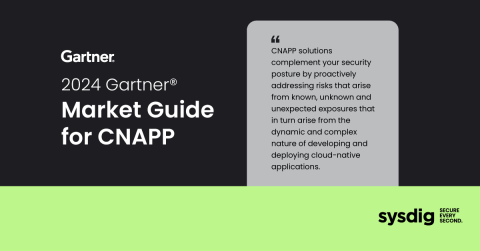2024 Gartner CNAPP Market Guide: Runtime insights is a core pillar of cloud-native application protection platforms
As organizations continue to look for consolidated platforms to address their security needs, an important shift has happened. Customers have discovered that traditional tools focusing exclusively on static risks (such as misconfigurations, policy/control failures, and network exposure) are not enough to address today’s dynamic cloud threats.











